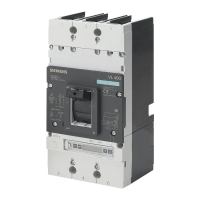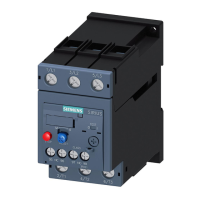Application planning
5.4 Use in DC systems
3VL IEC molded case circuit breakers
60 System Manual, 11/2013, 110 0110 - 02 DS 03
The 3VL molded case circuit breakers 160X to VL630 with thermal overload and magnetic
short-circuit trip units (TMTU) are suitable for use in DC systems.
The 3VL 160 to VL1600 molded case circuit breakers with electronic trip units (ETUs) are
suitable for switching DC.
Selection criteria for molded case circuit breakers
The following are the most important criteria for selecting the optimal molded case circuit
breaker for protecting a DC system:
● The rated current determines the size of the molded case circuit breaker.
● The rated voltage determines the number of series-connected poles required for breaking
- 3 or 4 poles.
● The maximum short-circuit current at the connection point determines the breaking
capacity.
● The type of supply determines the circuit design.
The rated current values are the same for both DC and AC applications.
In AC circuits, arc quenching is facilitated because the current flows through zero. These
preconditions do not apply for DC.
For this reason, a high arc voltage must be developed to interrupt the direct current.
Therefore, the breaking capacity depends on the arc quenching method and the line voltage.
Several switching contacts can be connected in series in order to achieve a higher arc
voltage.
Furthermore, the effects to be expected in the event of a ground fault or double ground fault
must also be considered.
Setting of the trip values
● Thermal overload release ("L" release):
Same settings as in 50 / 60 Hz systems.
● Instantaneous short-circuit release ("I" release):
The threshold values of the instantaneous short-circuit release ("I" release) increase by
30 to 40%. See also Chap. 9

